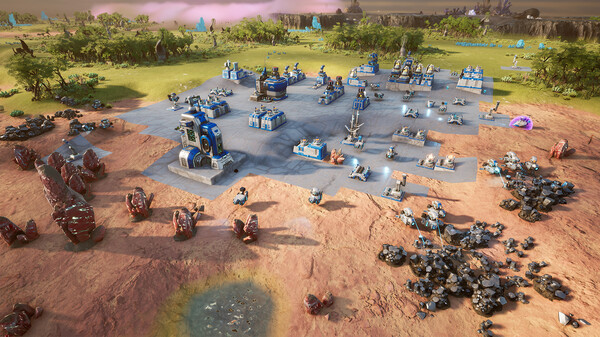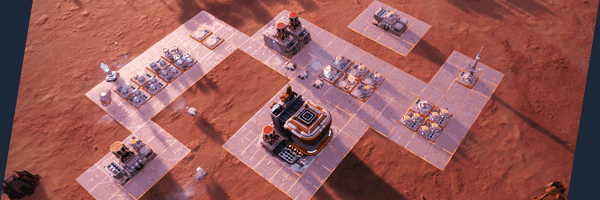Desynced: A Promising Sci-Fi Base-building Adventure

Resource Management and Automation:
Mastering the art of resource management is essential for survival in Desynced. The delicate balance between production chains and automation adds depth to the gameplay. I appreciated the in-depth Technology Tree, which expands your technological prowess through research. Unlocking new possibilities and developing advanced units and structures provides a satisfying sense of progression and creates an edge over your foes.
Player Reviews:
Throughout my journey, I pondered the experiences shared by other players. Some mentioned concerns about the scalability of drone deliveries, expressing worries about excessive vehicle traffic in their bustling bases. This feedback, while valid, didn't hinder my gameplay significantly. Experimenting with efficient logistics networks and optimizing routes can alleviate this issue.
Diverse Gameplay Elements:
Desynced offers a range of gameplay elements beyond base-building. Exploring ancient ruins introduces puzzles that provide a welcomed variety. While a few players found them mildly annoying, I appreciated the developers' attempt to create unique challenges within the game. Additionally, the inclusion of modding support and Steam Workshop integration gives players the opportunity to shape their own experiences and ensures the game's longevity.
AI Customization and Programming:
One fascinating aspect of Desynced is the ability to customize and program units according to your playstyle. However, as pointed out by a player with a software engineering background, the feature lacks sufficient tooltips and explanations. As I delved into this aspect, I, too, encountered a steep learning curve. I recommend beginners take time to experiment and learn from online resources to fully leverage this feature's potential.
Active Development and Early Access:
The developers of Desynced have garnered praise for their commitment to continuously improving the game. Players have expressed confidence in the development team, recognizing their active engagement with the community. Early access provides an exciting opportunity to be part of the game's growth, with new content updates anticipated to enhance the gameplay experience further.
Conclusion:
Desynced is a breath of fresh air in the strategy and automation genre, offering a unique take on base-building with its drone-based logistics network. Engaging gameplay, immersive graphics, and a well-crafted technology tree create an enjoyable experience. While some areas might require further refinement, the game's potential shines through. As I eagerly await future updates, I'm confident that Desynced will only improve with time. So if you're a fan of sci-fi base-building adventures and seeking a new challenge, I highly recommend embarking on this thrilling journey.
Rating: 4/5
Guide to Building in the Game Desync:
1. Understand the importance of blueprints: In Desync, having design blueprints is crucial for success. These blueprints can either be inspired by your own creativity or copied from others.
2. Building module: The build module in Desync is a powerful tool that simplifies the construction process. It consists of an input, a distributor, factories, and storage. The module takes care of the rest, allowing you to focus on other aspects of the game.
3. Sub-components: To build the module, you will need various sub-components such as a requester, storage, distributor, double fabricator, double assembler, double Robotics, and double Refinery. These components are available for download if you are a patreon supporter, or you can set them up manually.
4. Building from scratch: If you prefer to build the module from scratch, start by identifying the available building area, which is a size of 6x6 in Desync. Begin with the distributor and then add the requester, storage, and other necessary components.
5. Placement: When placing the components, ensure they are aligned properly. The positioning can be towards the bottom or in the center, as long as it fits within the available space.
6. Optimization: Consider optimizing your build for specific items. For example, if you want to improve the build speed of energized plates, focus on creating a better build for that specific item. This can involve adjusting the configuration of the module.
7. Efficiency: To maximize efficiency, only build the components you currently need. For instance, if you are focusing on Robotics production, only build the Robotics component of the module.
8. Bonus tip: Deal with junk items stuck in generic storage by implementing a solution offered in the guide. This solution will be explained at the end.




Post a Comment